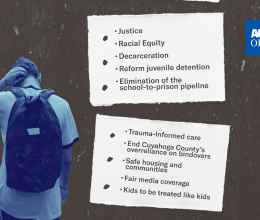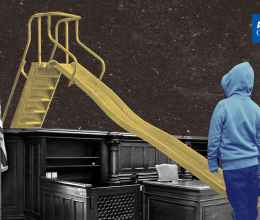Recently, the oldest judicial membership organization in the country joined other professional juvenile and social justice groups in calling for an end to the automatic shackling of youth in juvenile court.
The National Council of Juvenile and Family Court Judges recently affirmed what many advocates have been saying for years that the automatic use of restraints in juvenile court should stop. According to the NCJFCJ, the use of handcuffs, waist chains, ankle restraints, zip ties, or other restraints in juvenile court may:
- Interfere with the presumption of innocence and right to a fair trial.
- Impede communication and the ability to engage in court proceedings.
- Traumatize children and negatively impact their social and psychological development.
- Undermine the juvenile court’s purpose to rehabilitate and develop children under its jurisdiction.
Judges should presume that a child is capable of managing his or her behavior in court as not to require shackling for court hearings. Exceptions should be made on a case-by case basis, and the rationale must include why restraints are necessary by demonstrating the safety risk the child poses to him or herself or others.
Read the "Shackling in Ohio's Juvenile Courts" blog series.
The NCJFCJ called on juvenile court judges to convene security personnel and other stakeholders to address the issue of shackling and to work together to identify ways to ensure safety of children and others in courtrooms. The judicial association encouraged juvenile court judges to continually review shackling policies and practices, but also stated that judges should have the authority to determine whether or not a child needs to be shackled in the courtroom.
This resolution underscores four very important realities:
- The young people who appear in juvenile court are, in fact, children. The title of the resolution, "Resolution Regarding Shackling of Children in Juvenile Court," reminds us of that. This same sentiment has been affirmed in four separate U.S. Supreme Court rulings in recent years —drawing a distinct line between the adult and juvenile justice systems that all juvenile courts should follow.
- The juvenile justice system was established with a recognition that children should be rehabilitated not punished. Both respected research institutions and the U.S. Supreme Court have found that minors are less culpable and more amenable to rehabilitation than adults.
- Most youth in the juvenile court system not only face low-level offences, but also have experienced some sort of trauma, such as abuse, addiction or mental health problems.
- Juvenile court judges are leaders uniquely positioned to advance trauma-informed care and address shackling. Judges should determine in those exceptional circumstances if an individual child should be shackled.
As we work collectively to align the treatment of youth in the juvenile court system with the goals of building healthy adults, we must end practices like shackling to ensure that we are helping, and not further hurting, children.









